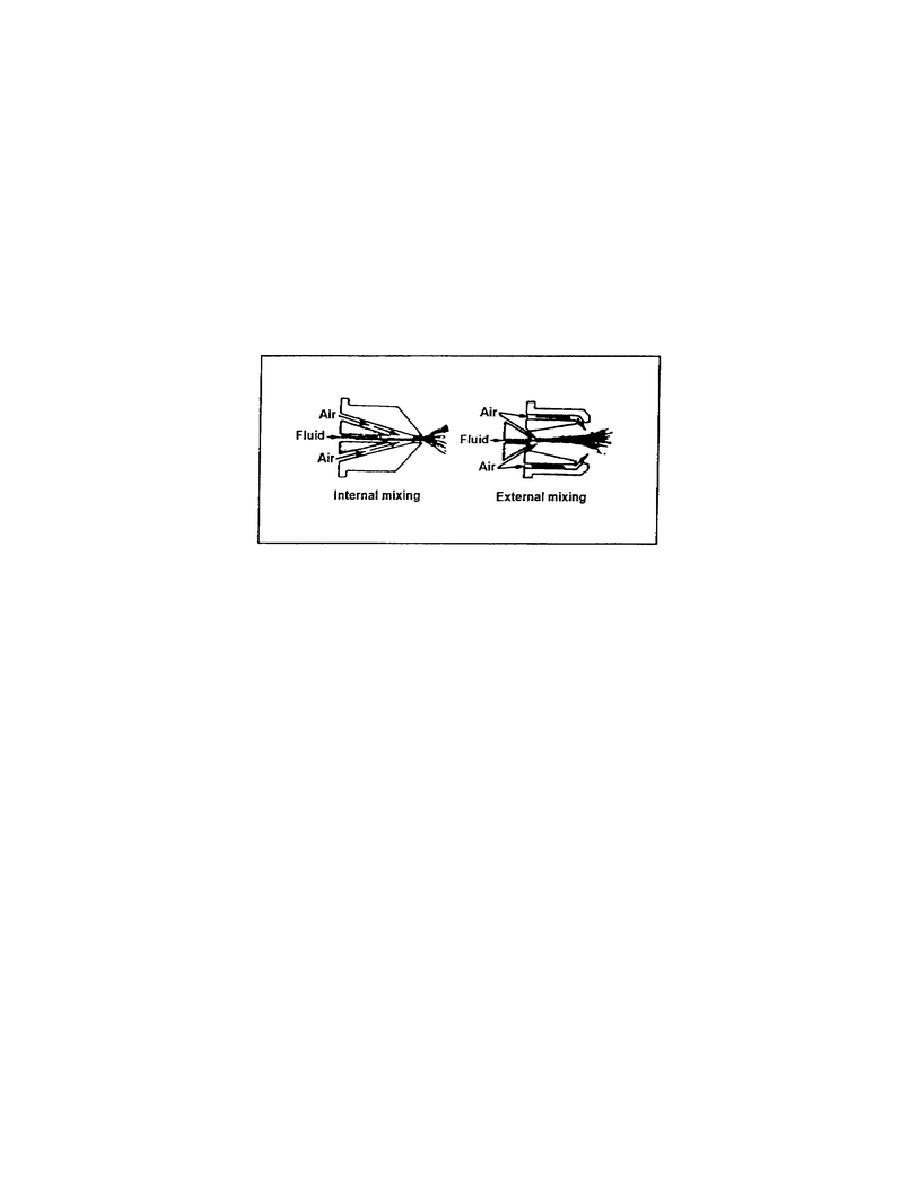
3-7. Paint Spray Guns. There are many paint spray gun variations: the internal or external mixing,
the suction or pressure fed, the bleeder or nonbleeder, and the attached or separate container. Each spray
gun may be a combination of any of the variations listed.
a. Internal Mixing. This spray gun mixes paint and air inside the gun and spray cap. It is
shown on the left side of Figure 3-37. The cap requires less air pressure than the external-mixing spray
gun. The cap is popular on small spray guns. The main fault of the internal mixing feature is the
tendency for fast-drying materials, which are atomized inside the cap, to collect inside and around the
outlet. Pressure fed-spray guns are usually of the internal mixing type.
b. External Mixing. This spray gun mixes the paint and air outside the gun and spray can. It is
shown on the right side of Figure 3-37.
Figure 3-37. Nozzles of internal- and external-mixing spray guns
c. Bleeder. This spray gun is constructed in such a way that air passes through it at all times.
This feature prevents excessive pressure buildups in the compressor. Use this type if the spray gun is to
be connected directly to a small compressor.
d. Nonbleeder. This spray gun is used in conjunction with a compressor that automatically
shuts off when pressure reaches the desired setting. When the trigger on the gun is released, air passing
through the gun is stopped.
e. Suction Fed. This spray gun is one in which pressurized air passes over the tip of a fluid
tube, sucks the fluid from the tube, and sprays the fluid into the airstream. This spray gun is identified
by the presence of an air vent in the paint-cup cover. This spray gun is ideal for spraying small areas
with lacquer, varnish, or other light materials. However, avoid using this gun when spraying heavy
paints, since it will not pull heavy materials up to the nozzle.
f. Pressure Fed. This spray gun is made with an airtight container. The pressurized air directed
into the container places the fluid under pressure, force the fluid up the fluid tube, and sprays the fluid.
This spray gun will spray heavy paints or materials when supplied with a low air volume. It is
considered one of the best general-purpose guns for use with regular paints. Pressure fed and suction
fed spray-guns are the same, and both types can use internal or external mixing of fluid and air. Since
no siphoning effect is necessary for pressure application, it is the best tool for volume painting.
EN0562
3-30



 Previous Page
Previous Page
